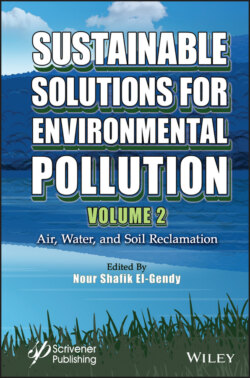Читать книгу Sustainable Solutions for Environmental Pollution, Volume 2 - Группа авторов - Страница 19
1.4 Constructed Porous Ramps
ОглавлениеThe self-purifying capacity of rivers is a valuable natural ecosystem service. During the transit of water along an infiltration/exfiltration sequence, the composition of water changes due to oxygen consumption, immobilization of organic carbon and nitrate production (Vidon et al., 2010; Peyrard et al., 2011). Moreover, the decomposition of OM by interstitial biofilms can induce the degradation of organic nitrogen by mineralization followed by nitrification (Breil et al., 2007b; Peyrard et al., 2011). It has been shown that the higher the energy of the current, the more efficient the metabolic processes are (Schmitt et al., 2011). In particular, a body of water can transform OM and nitrogenous mineral compounds into biomass or mineral nutrients which can be used by autotrophs.
Figure 1.2 The OTHU self-purification device based on a porous wood weir.
A pilot site was setup in 2000, as part of OTHU’s long-term outdoor observatory project (http://www.graie.org/othu/), to assess the impact of a self-purification device for combined sewer overflow discharges on a seasonal urban watercourse, with the aim of understanding the articulation between geomorphic, hydrological, and biotic components and identifying levers to modulate the impact of the pollutant discharge (Figure 1.2). Urban development increases the frequency of small floods (Braud et al., 2013) and riverbed erosion (Navratil et al., 2013), leading to biodiversity losses due to both poor water quality and poor geomorphic diversity.
Constructed porous ramps (groynes) aim at the induction of oxic/ anoxic sequences conducive to biodegradation. Optimization key points have been identified:
1 Trapping capacity of the porous groynes. It depends on the particle size distribution of the pollution (70% to 90% of the pollution in combined sewer overflows (CSOs)), the Stockes law, the downstream hydraulic gradient, and the dissipation of turbulence energy at the water-sediment interface. The trapping capacity will condition the length of the porous sediment and the height of the groyne;
2 Minimum residence time to allow biodegradation during the circulation of the hyporheic flux and oxygen consumption (oxic to anoxic conditions). The required residence time depends on the considered biodegradation kinetics considered. The volume and shape of the porous sediment influence the upwelling and down-welling flows which can be used to control and adjust the residence time;
3 Efficient operating system design at low flow rates. It functions as a hydraulic control point to maintain a critical water depth (by maximizing the down-welling flow of pollutants and dissolved oxygen); and when submerged at high flow rates, it does not increase the height of water during floods;
4 Frequency of self-regeneration of porous sediments over several decimetres. It depends mainly on the granulometry and inclination of the surface of the porous sediments. Computational Fluid Dynamics (CFD) tools help us in this task before developing a model of the compartmental type that is easy to be used by engineering offices.
As part of the ANR-EPEC research project, a series of physical-chemical parameters were monitored weekly for one year, both in surface waters and hyporheic waters of porous sediments accumulated behind three artificial porous weirs, built just downstream of a CSO outfall. The total length of the porous sediments was 60 m. Weekly analyses of the samples showed very effective trapping of organic pollution from the porous systems, especially during periods of low flow with fluctuating concentrations of C, N, and P compounds above their tolerance limits 20% of the time, while the downstream water quality was always below the pollution limits. These fluctuations illustrate the succession over time of the trapping and biodegradation processes. In the hyporheic zone, the nitrification and then denitrification processes along the hyporheic flow (Aucour et al., 2013) were demonstrated and confirmed by microbial analyses. The residence time was calculated from the phase shift of the daily variations between the surface water temperature and the hyporheic water temperature, which led to values ranging from several hours in high flow rate to several days in a low flow rate. Nitrogen and methane gas production was measured at a rate of 1 L/(d.m2) of porous sediment (Gervaix et al., 2018). Oxidative and anoxic biodegradation processes were observed depending on the flow rate and the season (Breil et al., 2007a) and on more or less dissolved oxygen inputs. This, together with temperature, modulates microbial activity and oxygen content. A model of the geometrical shapes effective on water aeration has been developed and has allowed to optimize the parameters (Khdhiri et al., 2014). The regeneration of porous sediments accumulated behind porous weirs, functioning as artificial bio-filters, has been observed during intense flow events, leading to an increase of dissolved oxygen infiltration in the deep hyporheic layers, and inducing scouring and renewal of the surface layers.
